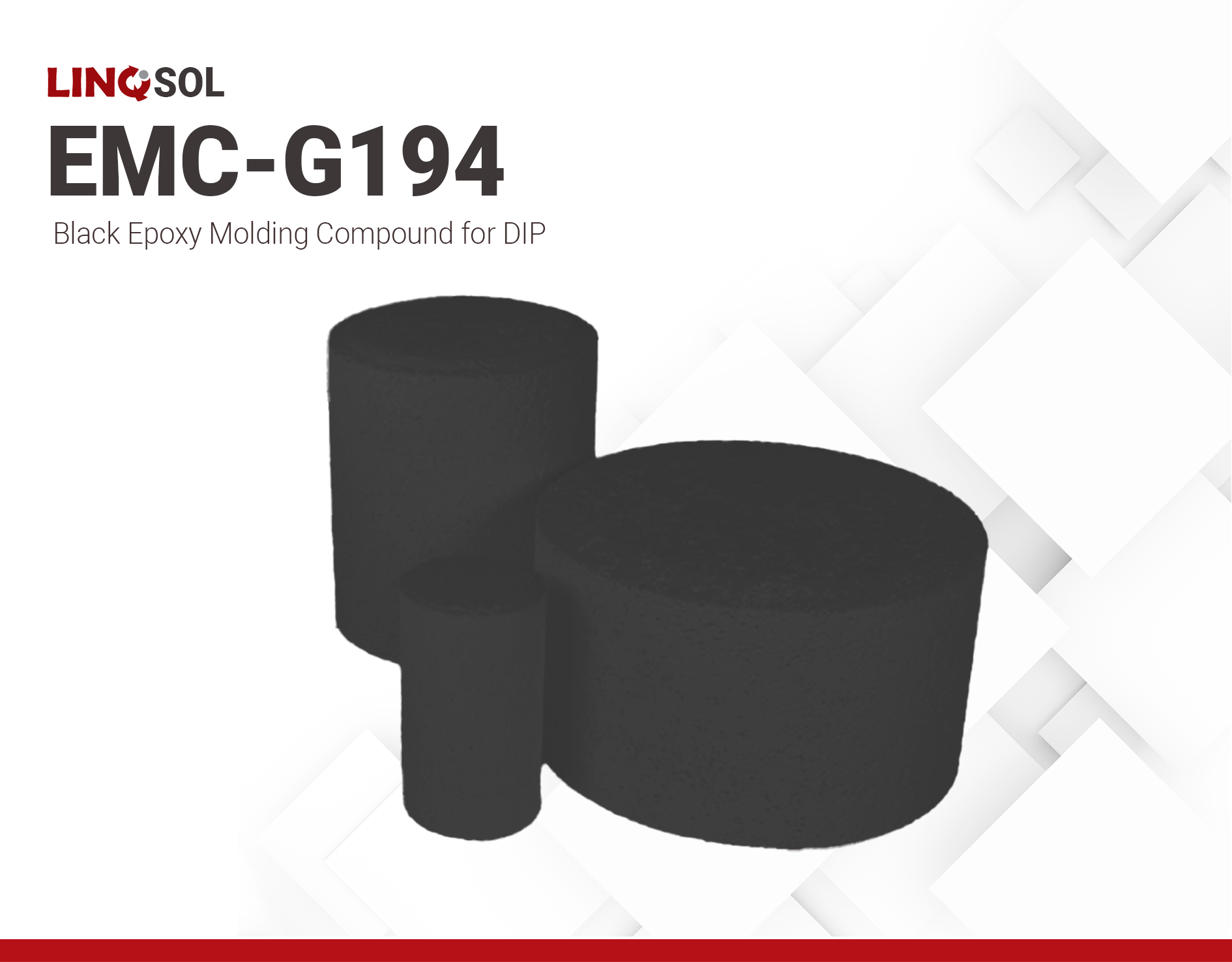EMC-G194 | Black Epoxy Molding Compound
- Good moldability
- Low stress
- High adhesion
Product Description
LINQSOL EMC-G194 is a green epoxy molding compound engineered for use in rectifier diodes, SMX, TO, and DIP semiconductor packages. It is designed for efficient, high-volume molding operations with excellent flow and low internal stress. This makes it ideal for devices with complex shapes or rigorous process requirements. EMC-G194 has high adhesion strength on leadframes, copper, and other common substrate materials, reducing delamination risks and ensuring mechanical stability during thermal cycling and high-temperature operation.
LINQSOL EMC-G194 delivers high performance and reliability while meeting EU RoHS requirements and REACH Substances of Very High Concern (SVHC) restrictions. EMC-G194 seamlessly integrates advanced material properties, safety compliance, and superior performance for reliable semiconductor encapsulation.
Product Key Features:
- Optimized Rheology for Enhanced Moldability: Allows for complete cavity fill, minimal wire sweep, and reduced void formation
- Low Stress Formulation: Minimizes stress exerted on the encapsulated die and bond wires during thermal cycling, significantly reducing the risk of delamination, die cracking, and bond wire deformation.
- High Adhesion for Robust Encapsulation: Crucial for preventing moisture ingress and delamination, which are primary failure mechanisms in encapsulated devices. The strong bond integrity ensures long-term protection against environmental factors and mechanical stresses.
LINQSOL EMC-G194 is available in custom pellet dimensions. Contact us for more information.
Technical Specifications
| General Properties | |||||||
| Filler Size Cut | 150 µm | ||||||
| Specific Gravity Specific Gravity Specific gravity (SG) is the ratio of the density of a substance to the density of a reference substance; equivalently, it is the ratio of the mass of a substance to the mass of a reference substance for the same given volume. For liquids, the reference substance is almost always water (1), while for gases, it is air (1.18) at room temperature. Specific gravity is unitless. | 1.82 | ||||||
| Chemical Properties | |||||||
| |||||||
| Water Absorption | 0.44 % | ||||||
| Electrical Properties | |||||||
| |||||||
| Mechanical Properties | |||||||
| |||||||
| |||||||
| |||||||
| Thermal Properties | |||||||
| |||||||
| |||||||
| Glass Transition Temperature (Tg) Glass Transition Temperature (Tg) The glass transition temperature for organic adhesives is a temperature region where the polymers change from glassy and brittle to soft and rubbery. Increasing the temperature further continues the softening process as the viscosity drops too. Temperatures between the glass transition temperature and below the decomposition point of the adhesive are the best region for bonding. The glass-transition temperature Tg of a material characterizes the range of temperatures over which this glass transition occurs. | 175 °C | ||||||
Additional Information
Processing Instructions
- Before use, let LINQSOL EMC-G194 reach room temperature (23±5 °C) for 24 hours. Keep the bag unopened and stored in a dry location with a relative humidity of ≤50% during thawing to prevent moisture contamination.
- Use the materials within 72 hours after removing the container from cold storage.
Storage and Handling
- LINQSOL EMC-G194 is available in pressed pellets in a wide range of sizes to meet specific customer needs. To ensure product integrity, keep it away from oxidizing materials. For long-term storage, maintain a cold environment. The shelf life when stored below 5 °C is 183 days.





